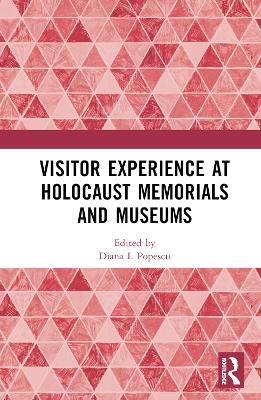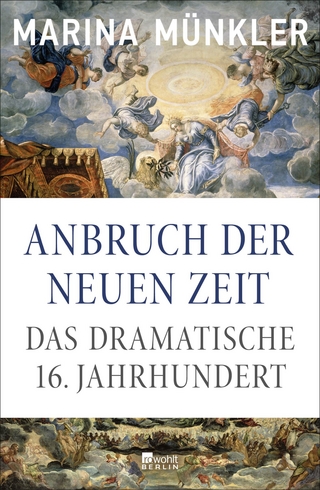
Visitor Experience at Holocaust Memorials and Museums
Routledge (Verlag)
978-1-032-11587-0 (ISBN)
Drawing exclusively upon empirical research, chapters within the book offer critical insights about visitor experience at museums and memory sites in the United States, Poland, Austria, Germany, France, the UK, Norway, Hungary, Australia, and Israel. The contributions to the volume explore visitor experience in all its complexity and argue that visitors are more than just "learners". Approaching visitor experience as a multidimensional phenomenon, the book positions visitor experience within a diverse national, ethnic, cultural, social, and generational context. It also considers the impact of museums’ curatorial and design choices, visitor motivations and expectations, and the crucial role emotions play in shaping understanding of historical events and subjects. By approaching visitors as active interpreters of memory spaces and museum exhibitions, Popescu and the contributing authors provide a much-needed insight into the different ways in which members of the public act as "agents of memory", endowing this history with personal and collective meaning and relevance.
Visitor Experience at Holocaust Memorials and Museums offers significant insights into audience motivation, expectation, and behaviour. It is essential reading for academics, postgraduate students and practitioners with an interest in museums and heritage, visitor studies, Holocaust and genocide studies, and tourism.
Diana I. Popescu is Honorary Research Fellow at Birkbeck Institute for the study of Antisemitism, Birkbeck, University of London. Popescu’s research focuses on public history and public reception of violent histories, particularly of the Holocaust. Her work looks at the ethics and the aesthetics of representing racial violence in public art, museum exhibitions and memorial projects and at how members of the public engage with and respond to such representations.
Introduction: Visitors at Holocaust Museums and Memory sites; Part I: Visitor Experience in Museum Spaces; 1. Mobile Memory; or What Visitors Saw at the United States Holocaust Memorial Museum; 2. Visitor Emotions, Experientiality, Holocaust, and Human Rights: TripAdvisor Responses to the Topography of Terror (Berlin) and the Kazerne Dossin (Mechelen); 3. "Really made you feel for the Jews who went through this terrible time in History" Holocaust Audience Re-mediation and Re-narrativization at the Florida Holocaust Museum; 4. Understanding Visitors’ Bodily Engagement with Holocaust Museum Architecture: A Comparative Empirical Research at three European Museums; 5. Attention Please: The Tour Guide is Here to Speak Out. The Role of the Israeli Tour Guide at Holocaust Sites in Israel; 6. The Impact of Emotions, Empathy, and Memory in Holocaust exhibitions: A Study of the National Holocaust Centre & Museum in Nottinghamshire, and the Jewish Museum in London; 7. The Affective Entanglements of the Visitor Experience at Holocaust Sites and Museums; Part II: Digital Engagement Inside and Outside the Museum and Memory Site; 8. "…It no longer is the same place": Exploring Realities in the Memorial Falstad Centre with the ‘Falstad Digital Reconstruction and V/AR Guide’; 9. "Ways of seeing". Visitor response to Holocaust Photographs at ‘The Eye as Witness: Recording the Holocaust’ Exhibition; 10. Dachau from a Distance: The Liberation during The COVID-19 Pandemic; 11. Curating the Past: Digital Media and Visitor Experiences at the Memorial to the Murdered Jews of Europe; 11 Diversity, Digital Programming, and the Small Holocaust Education Centre: Examining Paths and Obstacles to Visitor Experience; Part III: Visitors at Former Camp Sites; 12. The Unanticipated Visitor: A Case Study of Response and Poetry at Sites of Holocaust Memory; 13. "Did you have a good trip?" Young people’s Reflections on Visiting the Auschwitz-Birkenau State Museum and the Town of Oświęcim; 14. Rewind, Relisten, Rethink: The Value of Audience Reception for Grasping Art’s Efficacy; 15. "The value of being there" -Visitor Experiences at German Holocaust Memorial Sites; 16. "Everyone Talks About the Wind": Temporality, Climate, and the More-than Representational Landscapes of the Mémorial du Camp de Rivesaltes; 17. Guiding or Obscuring? Visitor Engagement with Treblinka’s Audio Guide and Its Sonic Infrastructure; 18. Guiding or Obscuring? Visitor Engagement with Treblinka’s Audio Guide and Its Sonic Infrastructure.
| Erscheinungsdatum | 10.11.2022 |
|---|---|
| Zusatzinfo | 2 Tables, black and white; 12 Halftones, black and white; 12 Illustrations, black and white |
| Verlagsort | London |
| Sprache | englisch |
| Maße | 156 x 234 mm |
| Gewicht | 1120 g |
| Themenwelt | Kunst / Musik / Theater |
| Reisen ► Reiseführer | |
| Geschichte ► Allgemeine Geschichte ► Neuzeit (bis 1918) | |
| Geisteswissenschaften ► Geschichte ► Hilfswissenschaften | |
| Sozialwissenschaften | |
| Wirtschaft | |
| ISBN-10 | 1-032-11587-4 / 1032115874 |
| ISBN-13 | 978-1-032-11587-0 / 9781032115870 |
| Zustand | Neuware |
| Informationen gemäß Produktsicherheitsverordnung (GPSR) | |
| Haben Sie eine Frage zum Produkt? |
aus dem Bereich


